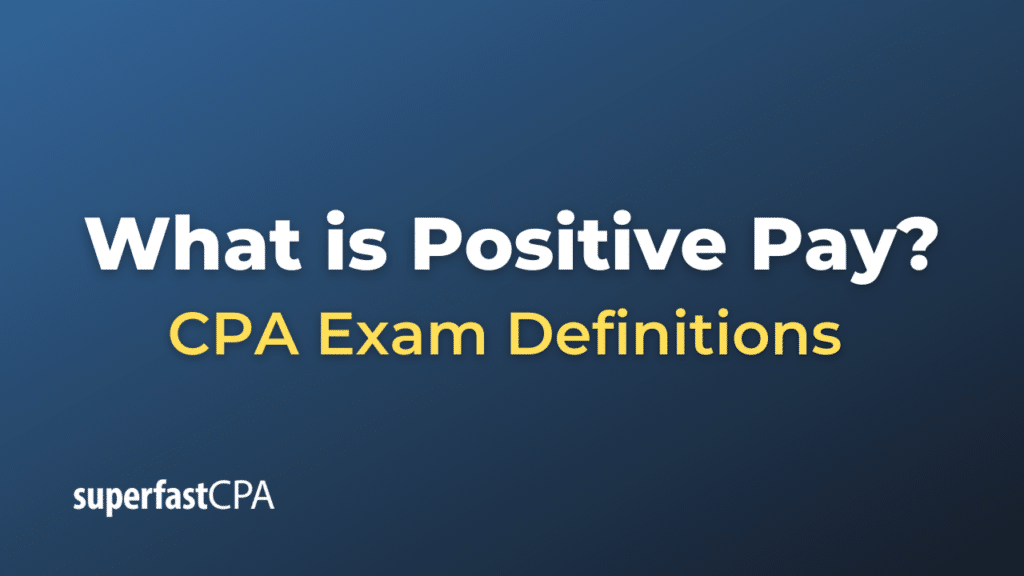Positive Pay
Positive pay is a service offered by banks to protect against check fraud. Businesses that use this service send (electronically) a list of checks they have issued each day to the bank. This list includes the check numbers, amounts, and payee names. When each check is presented for payment, the bank verifies it against the company’s list. If the check number and amount do not exactly match the information on the list, the bank will not pay the check and notify the company, who can then decide if the check is fraudulent or not.
Positive pay is an effective way to detect fraudulent checks and prevent check fraud. However, it does require the company to have systems in place to gather the necessary information and send it to the bank each day.
This system is mostly used by businesses rather than individuals due to the volume of checks they issue and the potential losses they could suffer from check fraud. It provides a strong level of security against forged, altered, or counterfeit checks.
Example of Positive Pay
Let’s say that ABC Corporation has decided to use positive pay as a method of safeguarding its check payment process. It issues numerous checks each day to vendors for goods and services. Each day, ABC Corporation’s accounting system generates a report of all checks issued that day, including the check number, the amount, and the payee.
This report (a “check-issue” file) is sent to ABC Corporation’s bank. The bank uploads the report into its positive pay system.
The next day, a vendor to whom ABC Corporation has issued a check deposits it into their bank account. Their bank then sends the check to ABC Corporation’s bank for payment.
ABC Corporation’s bank verifies the check number, the amount, and the payee with the information it has received in the check-issue file. If all the information matches exactly, the bank processes the check normally.
However, let’s say there is a discrepancy. The check amount doesn’t match the amount listed in the check-issue file. In this case, the bank does not immediately process the check. Instead, it sends an alert to ABC Corporation informing them of the discrepancy and provides them with an image of the check.
ABC Corporation reviews the check and realizes that it was altered after it was issued. The vendor was supposed to receive a check for $1,000, but the check was fraudulently altered to $10,000. ABC Corporation tells its bank not to pay the check, successfully thwarting the attempted fraud.
In this way, positive pay can provide effective protection against check fraud.













